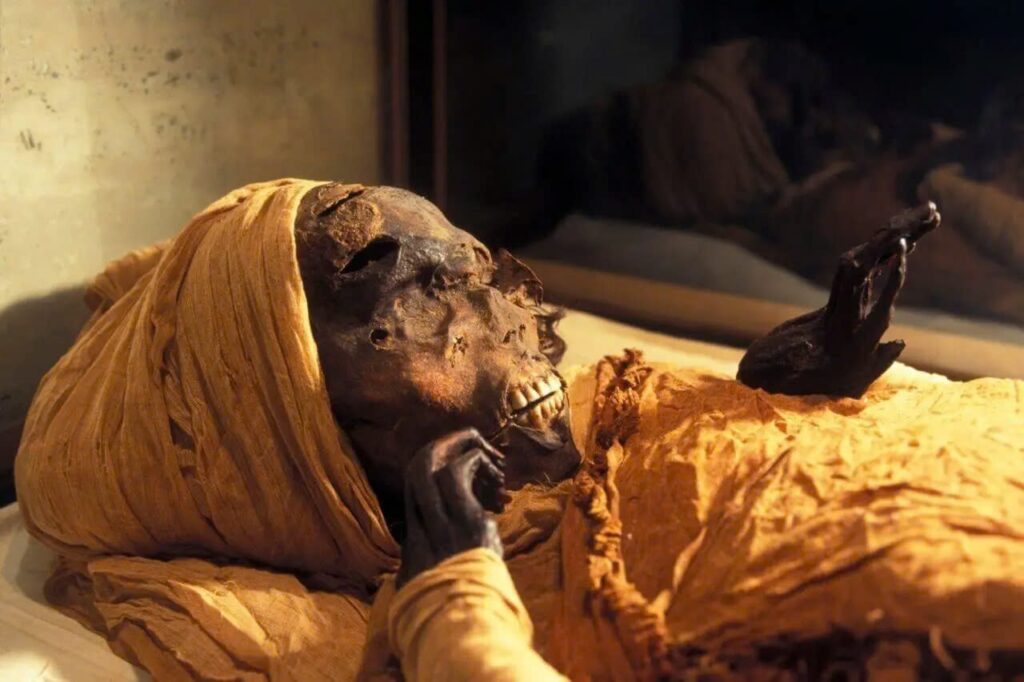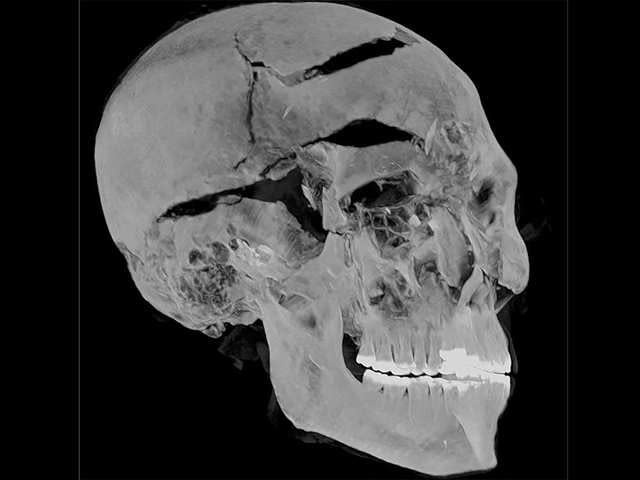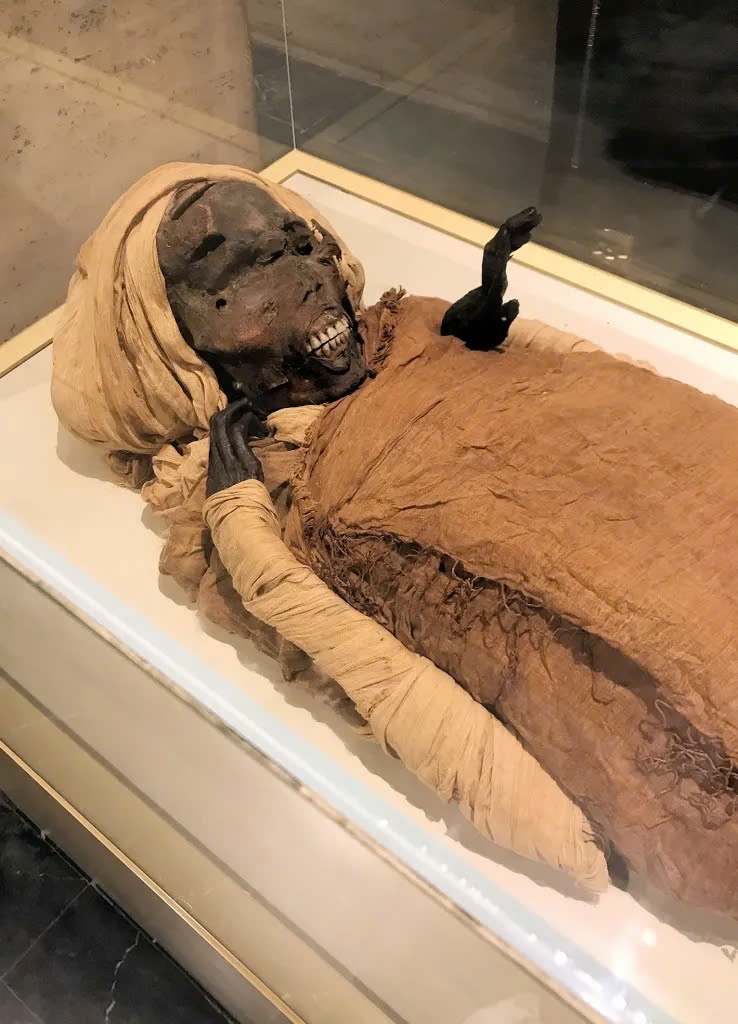The Mummy and Its Discoveries

Seqenenre Tao II’s mummy was originally buried at Dra’ Abu el-Naga’, but later reburied at Deir el-Bahari in its original coffin. The mummy was discovered in the Deir el-Bahari cache (“DB320”) in 1881.
Despite its poor preservation, the mummy’s brain is still in the cranial cavity, and the mouth has a complete set of healthy teeth. The most striking feature, however, is the mummified head, which bears horrific battle wounds. These include a dagger thrust behind the ear, blows that smashed the cheek and nose, and a battle-axe cut through the bone above the forehead.

Seqenenre Tao II and the Hyksos Rule

According to a literary tale, Seqenenre Tao II was contemporary with Apophis, one of the last great Hyksos kings. The tale suggests that Seqenenre Tao II initiated a rebellion against the Hyksos, who had controlled parts of Egypt at the time.
The text describes the misery in Egypt during this period, with no proper king ruling the land. Seqenenre Tao II, as the Ruler of the Southern City, faced the Hyksos ruler Apophis, who dominated the land and received tribute from the entire country.
Seqenenre Tao II’s Heroic Legacy

Seqenenre Tao II, also known as Seqenenre Tao, was an ancient Egyptian king who ruled during the 17th Dynasty. His main achievement was his involvement in the struggle against the Hyksos, a foreign dynasty that had occupied parts of Egypt.
Seqenenre Tao II’s bravery and determination in challenging the Hyksos occupation earned him the title “The Brave” or “The Courageous.” His actions laid the groundwork for the subsequent military campaigns that would eventually drive out the Hyksos and restore Egyptian sovereignty.
Seqenenre Tao II’s mummy, with its remarkable battle wounds, stands as a testament to his heroic legacy and the pivotal role he played in the history of ancient Egypt.

